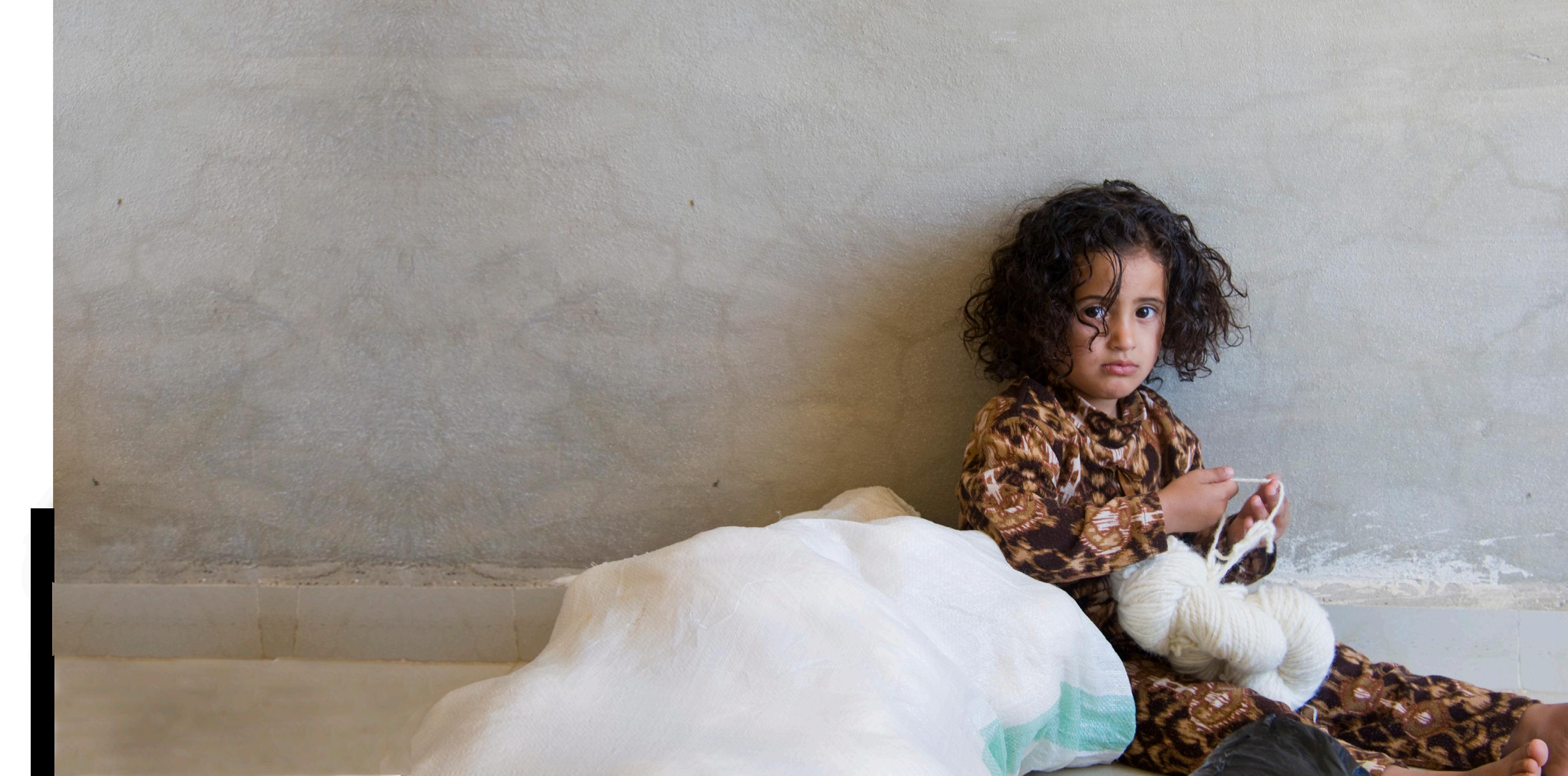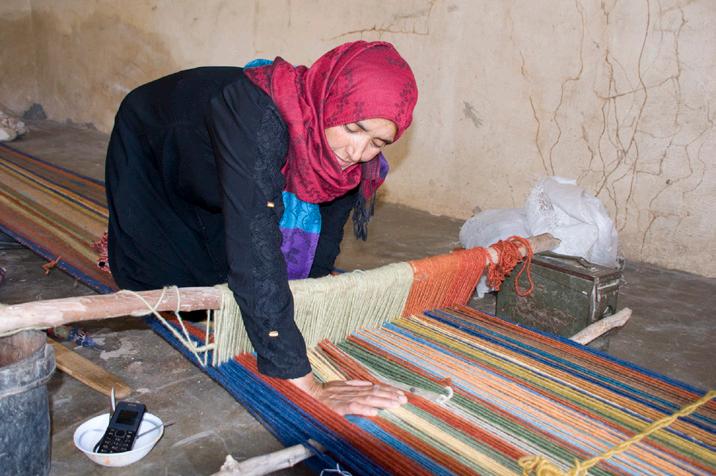
2 minute read
Bani Hamida
from 2016 Annual Issue
by Wild Fibers
Preserving the future of Jordan’s weaving traditions amidst an influx of refugees from Syria and Iraq.
story and photos by Linda Cortright
Advertisement
Traveling the desert for centuries, Bedouins traditionally have relied on their weaving to provide shelter from the harsh sand and sun. In the 1970s, the Bani Hamida stopped roaming, nearly bringing an end to a vital part of their heritage.
“ It’s good to be the king,” a phrase often quoted from the Mel Brooks hit A Brief History of the World, Part I, is a sentiment not universally shared by modern day monarchs and certainly not by King Abdullah II of Jordan, who confessed to his close friends and family during a celebration honoring the tenth anniversary of his reign, “I don’t want to do this anymore.” Beleaguered by a perpetually contentious political climate, the Middle East has endured continuous upheaval since Moses revealed the Ten Commandments. More recently in the wake of the Arab Spring and languishing oil prices, even the sheiks are tightening their turbans. Barbarian tactics employed by various religious fanatics are no longer fanning the flames; they have incited their own inferno, making Jordan’s shared borders with Syria and Iraq an unimpeded gateway for escape. This tiny kingdom the size of Indiana has welcomed 600 thousand Syrian refugees in the past four years and more than 700 thousand from Iraq in the last twenty.
To absorb this deluge of frightened, displaced humans has been a tough assignment for a country of 7.5 million with 22 percent unemployment.
No wonder the king was willing to trade in his paycheck. Perhaps His Majesty should take up weaving.

In 1985, Save the Children Federation’s country director in Jordan, Rebecca Salti, established the Bani Hamida Women’s Weaving Project to help revive traditional Bedouin rug weaving and generate income. Twelve years later, the project merged with Jordan River Foundation (JRF), an NGO chaired by Her Majesty Queen Rania al-Abdullah. The project now boasts a thirty-year history of providing employment for more than fifteen hundred women in thirteen villages during its zenith, weaving traditional Bedouin-style rugs that were once a staple of every Jordanian home. JRF’s showroom, located in a renovated schoolhouse along the affluent Rainbow Street on Jebel Amman, is filled with richly colored rugs and wall hangings, hand-embroidered pillows, and home accent pieces worthy of an interior decorator’s budget. The showroom caters to Jordan’s robust ex-pat clientele and well-heeled Jordanians, and its contents (and price tags) belie the impoverished conditions of its workers—a discrepancy further underscored when I am taken to Makawir to meet Hailma al-Qa’aydeh, the project’s director. On the day before the start of Ramadan (absurdly bad timing), I leave Amman, accompanied by Gretta Khaso, JRF’s lead designer, for the fifty-mile drive south along the King’s Highway. As we pass through Madaba, a city noted for its historic tile work and a growing bedroom community for Amman, urban density and its confinement soon yield to an expanse of desert populated by herds of mangy goats, Bedouin encampments, and enough trash to start a landfill the size of lower Manhattan. A haze of heat and lung-gripping dust is permanently affixed to the horizon, and though I am not at risk of becoming king (or queen), I do think I would prefer a throne elsewhere.




